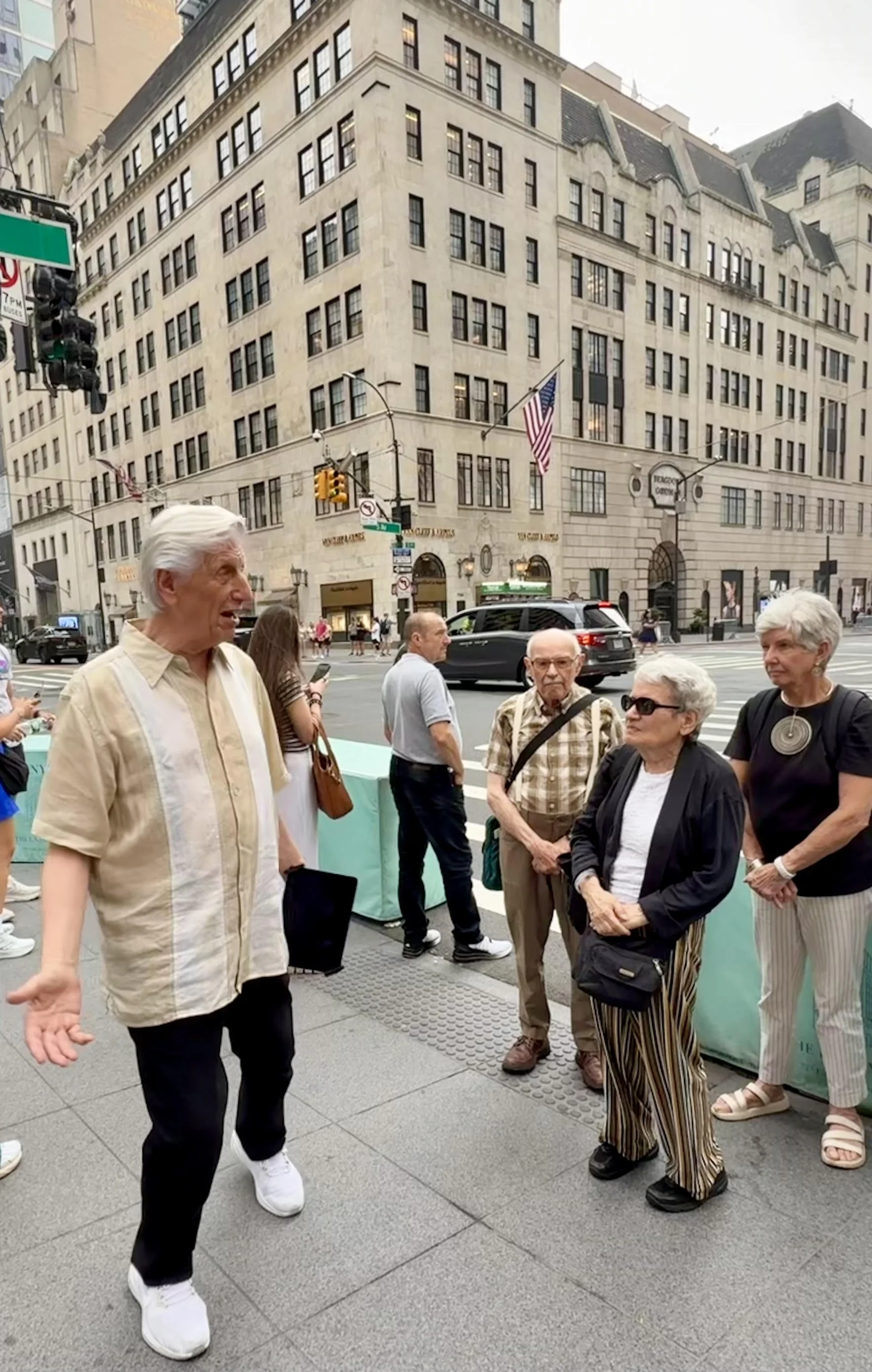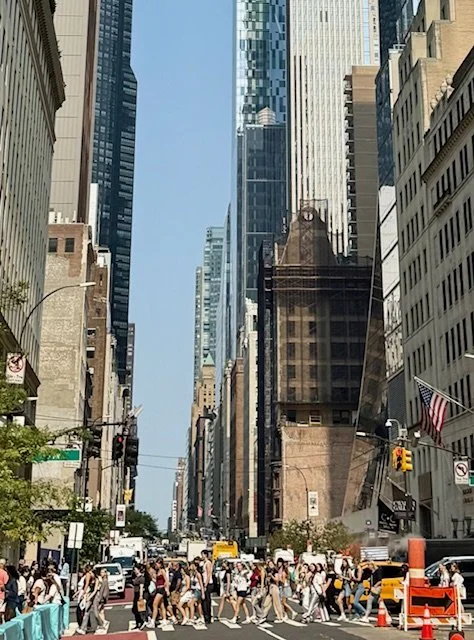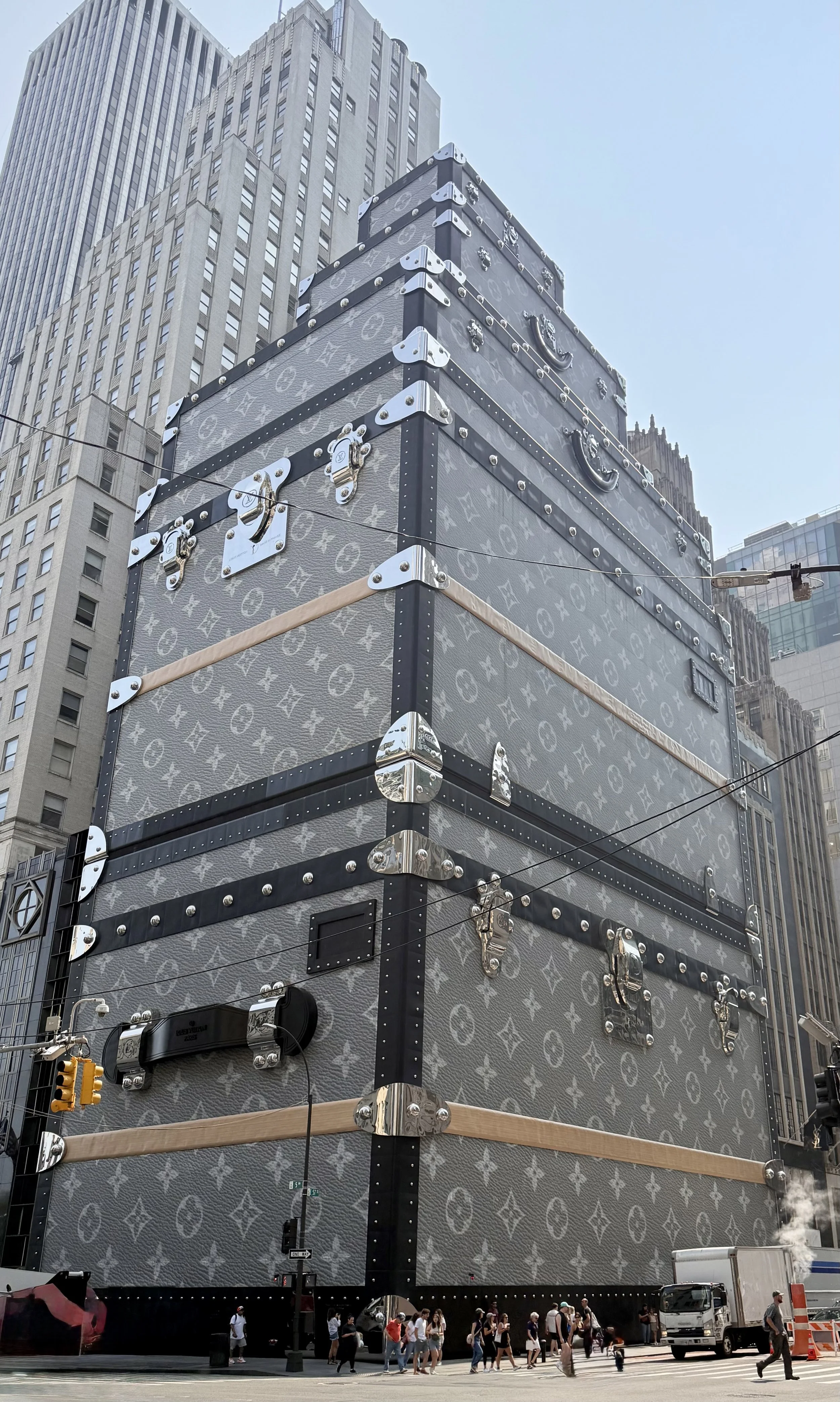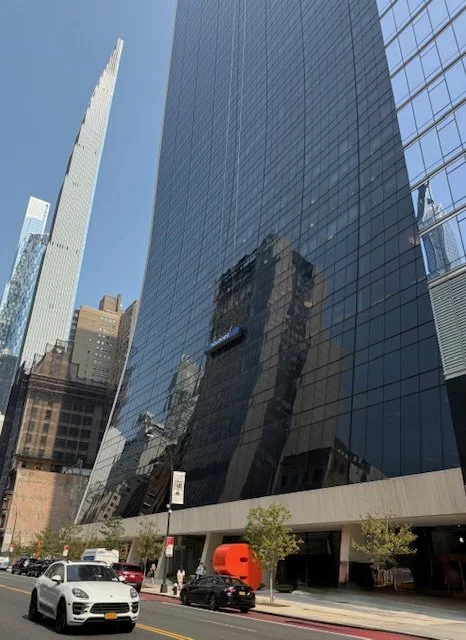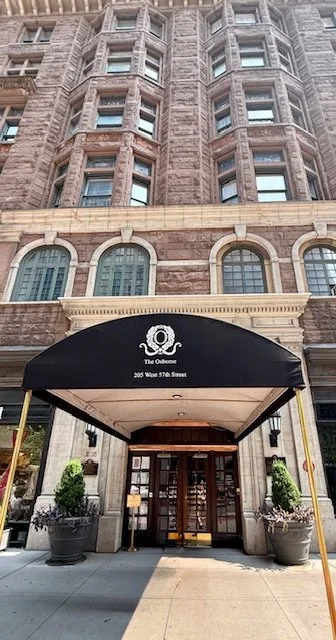Discovering 57th Street: A Greeters' Trip with Lester Barnett
What happens when a 20-year veteran Big Apple Greeter takes you through his own neighborhood? You discover an insider's New York that even locals rarely see.
Last month, Lester Barnett did just that, guiding a group of fellow Greeters along 57th Street from Fifth to Eighth Avenue, unveiling hidden layers of history beneath one of Manhattan's most famous corridors. With the storytelling flair that comes from decades of calling this city home, Lester wove together threads of history, art, architecture, and personal anecdotes into an unforgettable urban adventure.
From Mansions to Cultural Hubs
Our journey began with the remarkable evolution of 57th Street itself. As Lester explained, when New York City started expanding northward in the late 19th century, the street was anchored by grand private residences, including those of prominent families like the Vanderbilts and the Whitneys. By the early 20th century, these mansions and townhouses began giving way to commercial buildings and cultural institutions, setting the stage for the varied corridor we know today.
This transformation was no accident.
City planners, particularly Manhattan Borough President George McAneny, played a foundational role in shaping the street's development. Beginning in 1913, McAneny collaborated with planner Edward M. Bassett to create the Heights of Buildings Commission, which led to the landmark 1916 Zoning Resolution—the first citywide zoning law in the United States. This groundbreaking legislation established building limits and setbacks to preserve street-level light and air.
Beyond zoning reform, McAneny championed citywide "street widening" campaigns designed to modernize sidewalks for pedestrian traffic. These ambitious efforts involved removing "street furniture"—everything from staircases and arcades to porticos and small gardens. His dedication to these sweeping changes earned him a memorable nickname from the New York Tribune: the "Barber for Buildings."
The commercial evolution of 57th Street was also driven by factors like the construction of Carnegie Hall in 1891, which established the area as a cultural destination, and shifting economic trends that made the street an attractive location for high-end stores.
The cultural foundation deepened further with the efforts of well-connected painter Howard Russell Butler, a key founder of the American Fine Arts Society. This organization formed part of an artistic hub that included studio-residence buildings such as the Rodin Studios, fostering live-work spaces for generations of artists, musicians, and writers.
Gallery Row’s Golden Era
The 1940s marked another pivotal chapter in the street's story, as 57th Street became New York's premier gallery district.
Visionary art dealers like Peggy Guggenheim established galleries here—her groundbreaking Art of This Century gallery operated at 30 West 57th Street from 1942 to 1947. The street showcased works by Jackson Pollock, Max Ernst, Alberto Giacometti, Wassily Kandinsky, and Mark Rothko, often introducing these now-famous artists to American audiences for the first time.
The area also boasted a vibrant nightlife that drew celebrities from across the city, creating a unique blend of high culture and entertainment that defined mid-century Manhattan.
Views from present day 57th Street
Hidden Commercial Heritage
While 57th Street earned fame for its cultural contributions, Lester's tour revealed surprising industrial and commercial layers that shaped the neighborhood's character.
Who would have thought that the block near 57th and Broadway housed one of the early hubs for car dealerships? The Peerless Motor Car Company of New York opened a showroom and headquarters there in September 1909. While the main Peerless factory was in Cleveland, this location, and others like it, played a crucial role in establishing the automobile's presence in the city.
These unexpected historical layers added depth to our understanding of how the street balanced artistic endeavors with the commercial energy that has always driven New York forward.
The Rise of Billionaires’ Row
Lester also highlighted how commercial forces have once again reshaped 57th Street's identity.
Zoning modifications during Mayor Michael Bloomberg's administration in the early 21st century and the subsequent selling of air rights made possible the construction of today's supertall towers along what's now aptly dubbed "Billionaires' Row."
These developments have sparked significant controversy over their impact on the neighborhood's character, the shadows they cast on Central Park, and the broader questions they raise about housing inequality and urban development priorities in Manhattan.
These towers represent the latest chapter in 57th Street's ongoing evolution, but as our walk revealed, the street's most enduring treasures aren't only architectural—they're also personal.
Only in New York
From Marlon Brando's romantic life to the glory days of nearby nightclubs, Lester's vivid anecdotes made each stop come alive. His deep knowledge and heartfelt delivery reminded us what Greeters truly are — neighbors who carry the city’s stories as their own.
And only in New York could our exploration end like this: at Lester’s home, The Osborne at 205 West 57th Street, built in 1885, where he welcomed us into one of the city’s most storied residences. Once home to legends like Leonard Bernstein and other cultural giants, the building stands as a living monument to New York’s artistic soul.
It was the perfect finale to a walk that captured everything we love about this city—its layers of history, its personal connections, and its endless capacity to surprise.
Thank you, Lester!

